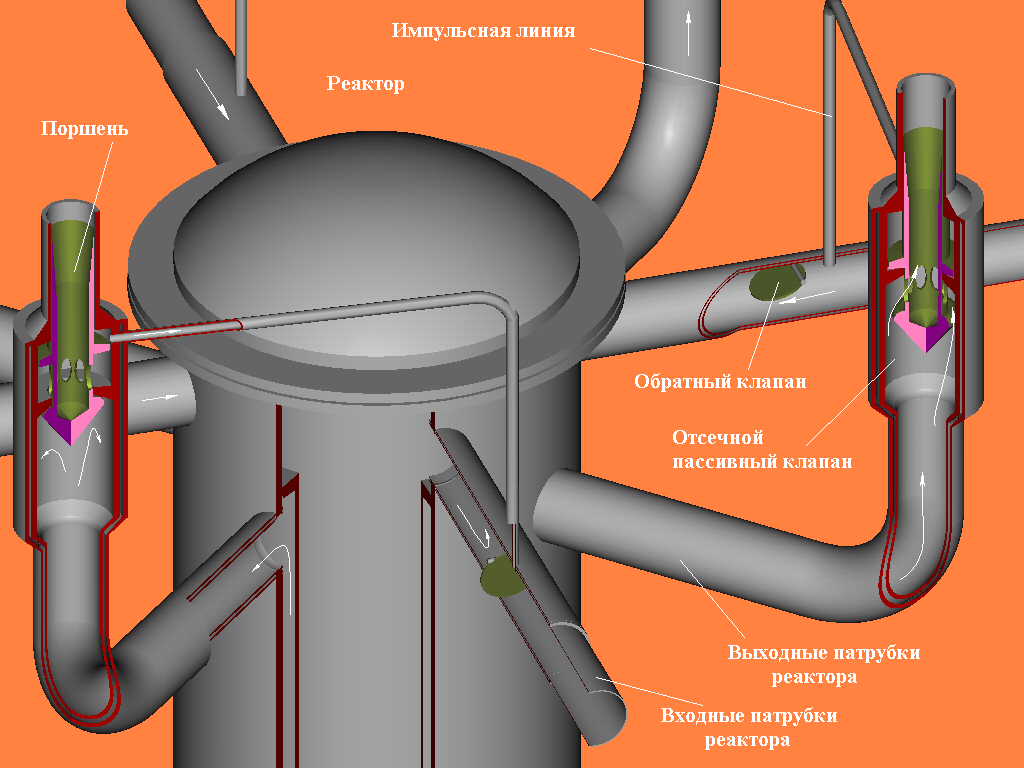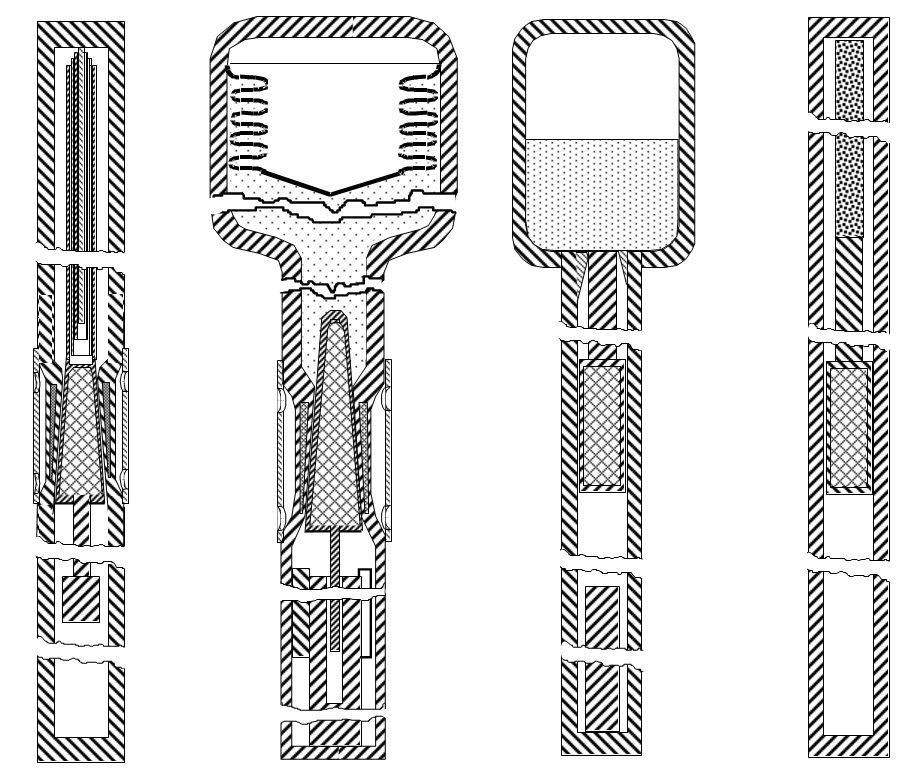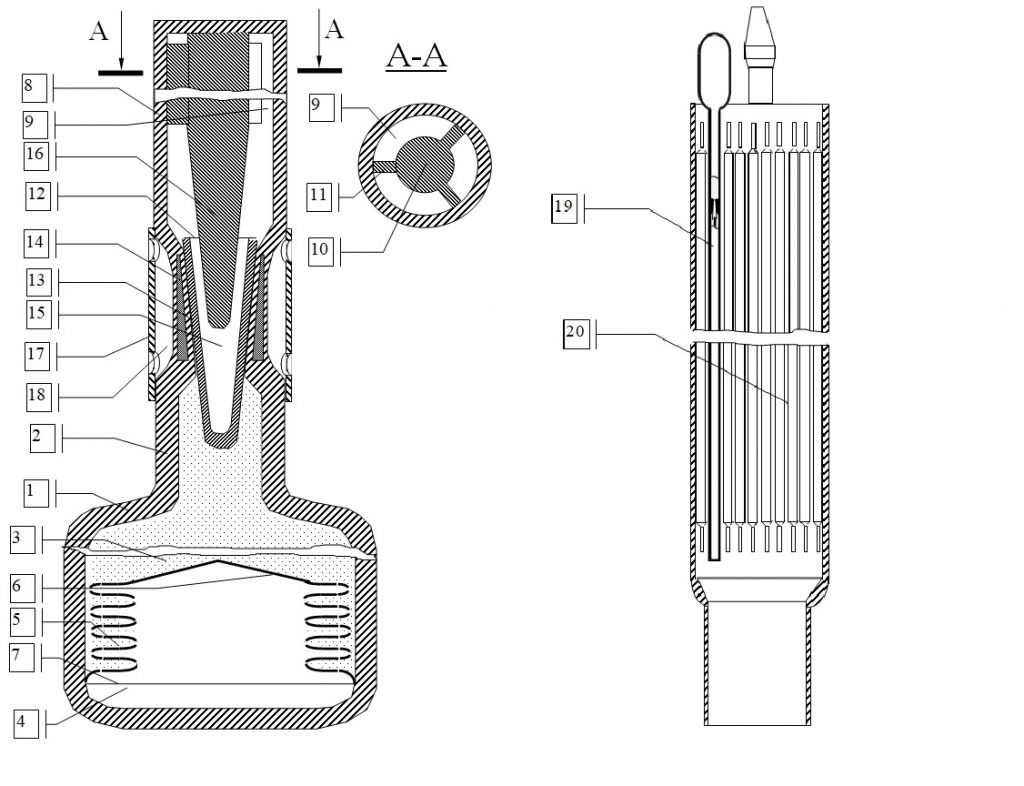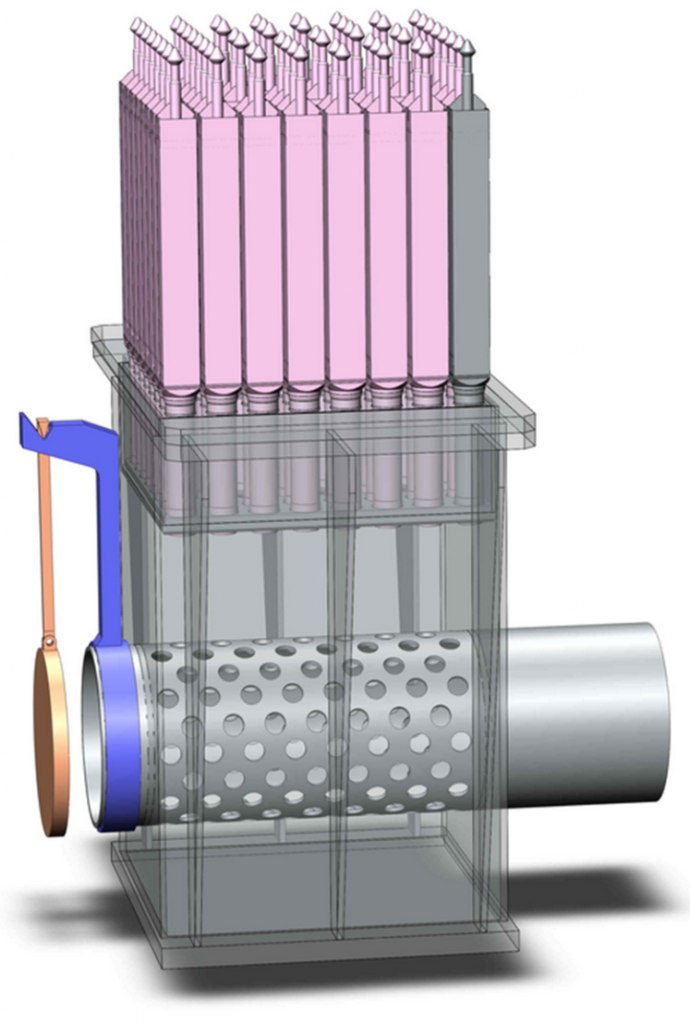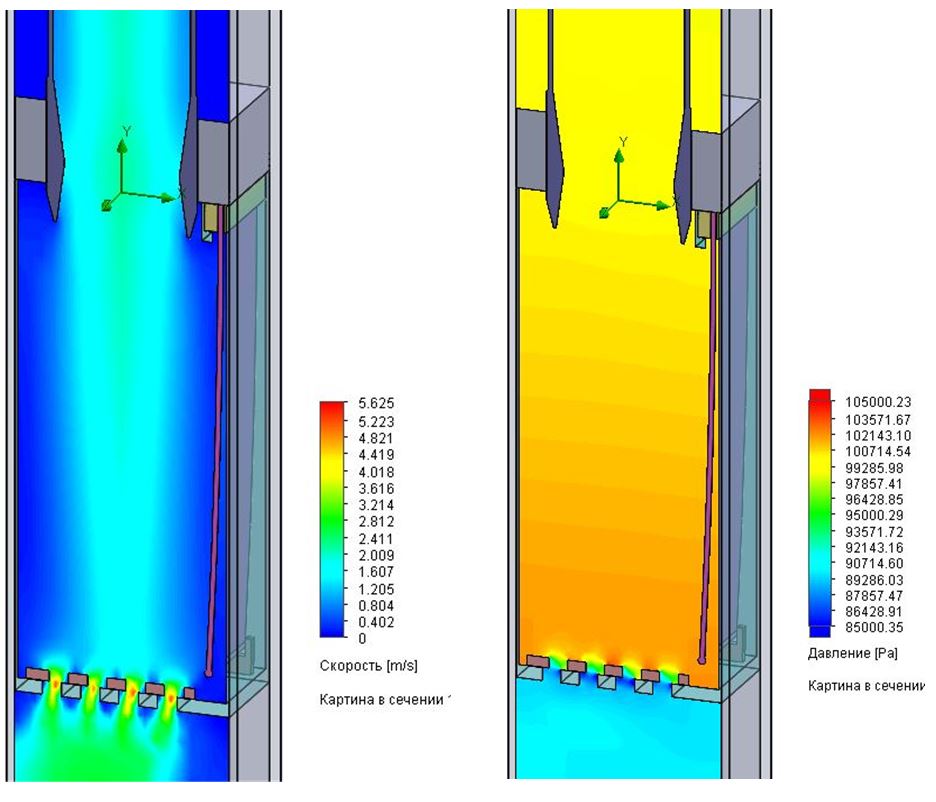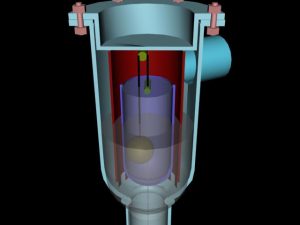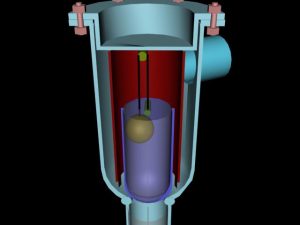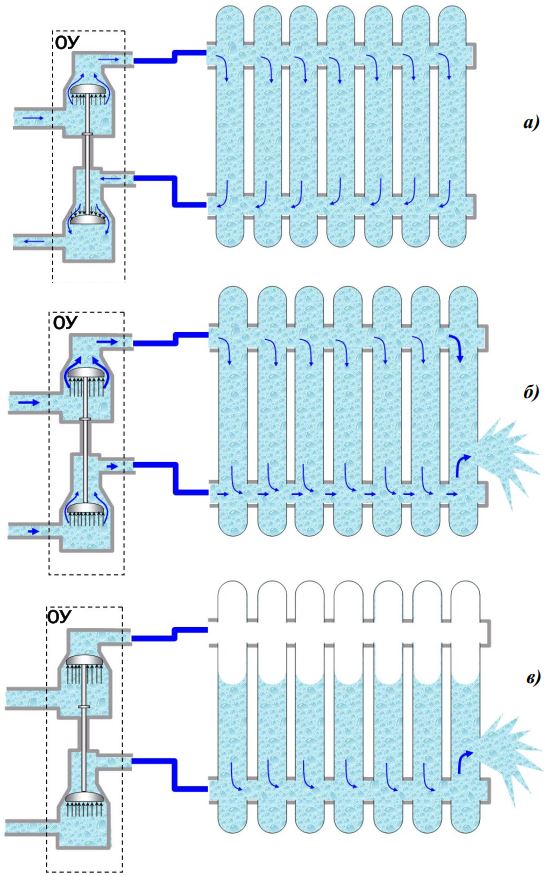Safety Systems
Reflections on research reactors
Размышления об исследовательских реакторах
The essence of the considered concepts of safety systems for reactor facilities is to increase reliability through the use of passive principles of operation
A loss of coolant accident (core dehydration) occurs when the pipeline of the reactor cooling system breaks or when a leak is so large that the coolant make-up system cannot compensate for the leak. Nuclear power plants are equipped with various technical safety systems designed to mitigate the consequences of this event.
From the point of view of the danger of radiation impact on the environment, disturbances in the operation of nuclear power plants associated with the loss of coolant differ from all other emergency situations in that the initial event, which consists in damage to one of the safety barriers, creates a threat of destruction of all other safety barriers [1] .
The approach to the problem under consideration can be defined as follows: what is more preferable — to stop the development of an emergency at the initial stage, preventing the operational parameters from going beyond the limits of dangerous values, or to overcome severe consequences (dehydration of the core, overheating of fuel elements and the related problem of refilling, etc.).
There is no need to dwell once again on the substantiation of the importance of the NPP safety problem. One of the promising directions for improving the safety of nuclear power plants is the creation of passive emergency protection devices (PEPD) for reactors. With their input, the reactor acquires an additional negative feedback on reactivity, which is triggered when the main operating parameters (temperature, coolant flow rate, power) go beyond the maximum permissible values. Based on the use of such devices, it becomes possible to develop nuclear power plants that are internally resistant to failures of technical means and personnel errors. PEPD also manage the beyond design basis accident, i.e. take actions aimed at preventing the development of a design basis accident into a beyond design basis accident and mitigating the consequences of a beyond design basis accident.
One of the determining factors in the destruction of fuel elements in pressurized water reactors is the crisis of heat transfer during boiling, leading to a sharp increase in the temperature of the fuel cladding, its melting and the release of the fuel composition into the coolant. The previously considered direct-acting emergency protection devices did not take into account this mechanism, and therefore, practically lost their effectiveness due to their inertia. Following the logic of “knocking out a wedge with a wedge”, the most rational physical effect, on the basis of which the work of direct-acting emergency protection should be built, is the same heat transfer crisis, which has a pronounced threshold. At the same time, the main problem is solved that did not allow earlier to consider PEPD as equivalent to currently operating active systems, namely, it provides a speed that exceeds the speed of any suppressed (by this tool) emergency processes and / or their combinations leading to exceeding the established safety limits.
The evaluation of the estimated performance of one of the variants of the emergency protection device in relation to the VVER-1000 reactor showed that in an emergency situation (during a reactive accident), the response time is sufficient to prevent a dangerous temperature rise in the most energy-intensive fuel element.
The analysis of the safety system using the phenomenon of heat transfer crisis on the basis of a set of 26 criteria, considered as a tool for a quick expert assessment of the safety of developed, operating or modernized installations in order to analyze, compare (with prototypes and options with each other), identify bottlenecks and their elimination. Below, this criterion complex is considered in relation to equipping a pressurized water reactor plant with a direct-acting emergency protection device using the heat transfer crisis phenomenon.
The conducted criterion analysis allows us to speak about the high level of perfection of the PEPD based on the application of the phenomenon of heat transfer crisis, and, consequently, about the prospects for the development of devices of this type.
Creation of systems for cooling the cores of pool reactor plants of medium and large power in the event of termination of forced circulation in the primary circuit requires a balanced approach. First of all, it is necessary to evaluate the possibilities of developing inter-cell natural circulation (NC) in the core and, in the case of its high efficiency of fuel assembly cooling, it is possible to refuse to create a special safety system for organizing a natural circulation loop. With special care, it is necessary to treat safety systems for the organization of the natural circulation circuit, if it uses active valves that are triggered by a control signal. In this case, the main danger is a false response to the opening of the NC valve when the reactor is operating at power, leading to the bypass of the core through this valve and a significant deterioration in the parameters of heat removal from the FA. A safer alternative to such systems can be systems for organizing a natural circulation circuit with passive NC valves. Calculation estimates have shown the possibility of developing such passive NC valves with convenient parameters for closing and opening them.
There is a possibility of using passive systems not only in the safety systems of nuclear reactors, but also their use to increase the efficiency and improve the thermal-hydraulic characteristics of research reactors. As an example, the application of a system for passive hydroprofiling of the cells of the core of the pool reactor RBT-6 using the bending of bimetallic plates (BP) with a change in temperature at the outlet of the FA is considered.
Cut-off valves of passive action are designed to shut off the flow of the medium when changing the phase state liquid-gas (steam) and gas (steam)-liquid. The valve designs are sufficiently technologically advanced and maintainable. In addition, the hydraulic resistance of such valves can be low. The advantage of the design is the absence of complex or damaged elements (for example, requiring tightness of floats). The principle of operation is very simple and the design is easy to calculate. Such valves, for example, can be used to prevent gas from the pressure compensator from entering the reactor when the primary circuit is depressurized.
The device is designed to maintain a given fluid flow through the path on which it is installed, regardless of pressure fluctuations in the hydraulic system. The principle of operation of the device is passive, the movement of the actuator is due to the energy of the moving stream. The device consists of only two main elements — the body and the executive body (piston). The principle of operation of the executive body is based on the resulting effect on the piston of oppositely directed forces, which, depending on the flow rate, make it move up or down, respectively, increasing or decreasing the hydraulic resistance of the device.
In branched hydraulic systems, a break in one of the loops can lead to catastrophic consequences for the entire system if the depressurized section is not cut off in a timely manner. Complex systems of emergency cut-off of depressurized sections are most often economically unjustified and therefore are not used. But what if we make a simple device that operates on a passive principle such as a check valve? Why not?
The picture on the right illustrates the sequence of stages of operation of a passive shut-off valve, which will independently cut off the depressurized part of an extensive hydraulic system and allow it to function without an emergency section.
uzikof@gmail.com
uzikov62@mail.ru
Address
Bratskaya st., 27 apt. 61 Dimitrovgrad, Ulyanovsk region, Russia, 433515
Call Us
+7 917 622 40 47

